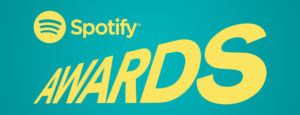Bulldog DM highlighted in IDC research blog
Bulldog DM Founder John Petrocelli spoke with research powerhouse IDC to discuss live streaming during the current pandemic.

Read more on the IDC blog –> COVID-19’s Impact on the Gaming Market
Bulldog DM Founder John Petrocelli spoke with research powerhouse IDC to discuss live streaming during the current pandemic.

Read more on the IDC blog –> COVID-19’s Impact on the Gaming Market
Bloomberg Radio turned to Bulldog DM to get an update on the exploding world of live streaming. The Bloomberg business team spoke with founder John Petrocelli about the current state of live streaming and what to expect next.

Listen here –> Bloomberg Radio
On March 17th, Hyundai presented the 2021 bold new Elantra with a stunning live stream presentation ceremony broadcast to the world in real time. Working with Bulldog DM Hyundai extended the experience to Instagram, YouTube, Facebook, Twitter, LinkedIn and Hyundai.com. Automotive news reported that Hyundai was able to achieve a very noteworthy audience reach and tune in.

Please more here –> Automotive News
According to StreamElements and Arsenal.gg, the live-streaming sector grew a full 45 percent between March and April; year over year, the industry is up by 99 percent.
Read more –> The Verge
The singer-songwriters’ combined streams rise from 2 million to 6 million after Saturday’s event.
Read more–> Billboard
Bulldog DM Founder John Petrocelli will be interviewed by media expert and thought leader, Peter Csathy, Chairman of CREATV Media and regular contributor to Variety, Forbes, TechCrunch and Billboard. The conversation will cover all aspects of the live streaming medium and how it applies to both the music and marketing industries as well as their intersection.

See the interview on YouTube–> What Makes the Ideal Live Streaming Strategy for Artists and Brands Interview
Bulldog DM authors an article on what’s next for live streaming
 ”
”
Read the article on LinkedIn –> Will Live Streaming Still Be Relevant After COVID-19?
“Live” thrives on Twitter
Since January 2020, there has been a 9X increase in Tweets about virtual events. In fact, in 2020 alone, nearly 50% of internet users are expected to live-stream content.
Throughout 2019, we experienced a massive surge of brands coming to the platform to host live streams. In fact, over 115 brands hosted live streams with 80 million live viewers and more than 865,000 hours watched.
Read more –> Twitter
Bulldog DM authors an article on brand event marketing during the current crisis with insight into live streaming best practices.

Read the article on Linked In –> How to Plan Big Brand Events in the Age of the Coronavirus
Bulldog DM was selected by Spotify to bring the first ever Spotify Awards to the world via a global live stream. The Bulldog DM team worked with Spotify to enable a live video experience from the Spotify Awards viewing hub. Bulldog DM provided all of the transmission, live encoding, testing and video player functionality to bring this incredible experience to life for Spotify Premium users in Latin America and the US as well all Spotify users in other regions. In addition Bulldog DM provided reporting and extensions to social media where fans on Instagram, Twitter and Facebook could see the final minutes of the green carpet show and the first minutes of the actual award show. Mexico City is the #1 streaming location for Spotify in the world and the awards were based on actual data and streams served. The line up included J. Balvin, Bad Bunny, The Black Eyed Peas, Karol G, Julieta Venegas, Banda MS, Piso 21, Reik and others.

See the show here –> Spotify Awards